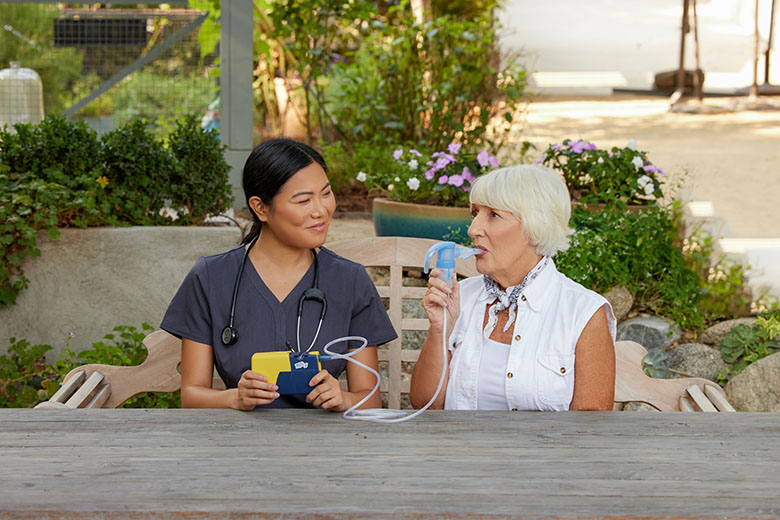What is a nebulizer treatment?
Nebulizer treatment provides fast relief when you're experiencing symptoms such as shortness of breath, chronic cough, excess mucus caused by any of the following: chronic obstructive pulmonary disease, emphysema, chronic bronchitis, or asthma, or another respiratory condition.
Nebulizers convert respiratory medications into a fine mist in order to deliver them directly to your upper and lower airways. This is especially useful if you experience severe symptoms related to your respiratory illness. Nebulizer treatments are an excellent alternative for any challenges that you have that would prevent you from utilizing your inhalers properly.
A nebulizer treatment usually requires a few minutes to complete. Fortunately, stationary and portable nebulizer compressors are available to accommodate your lifestyle.
How to do a nebulizer treatment
There are many different types of nebulizers and each is slightly different, so always read the manufacturer’s instructions for your specific device before using it.
Medication treatment time varies based on medication(s) being taken and nebulizer kit being utilized. Medication treatment times can vary between 5 to 20 mins, so be sure to set aside enough time to complete the treatment.
- Wash your hands thoroughly. Gather your supplies: nebulizer cup, mouthpiece/mask, reservoir tube (if applicable), and tubing.
- Attach one end of the tubing into the air outlet on the compressor.
- Attach the other end of the tubing to the nebulizer cup. Attach the tee piece and mouthpiece or mask to the nebulizer cup.
- Twist the end of the unit-dose medication vial. Squeeze all the liquid medication into the nebulizer cup.
- Turn on the compressor. You should see an aerosol mist coming from the mouthpiece or mask.
- Sit in an upright position. Take normal breaths during your treatment. If you feel lightheaded or dizzy, you may be breathing too quickly. STOP your treatment, relax until the feeling subsides, and then finish the rest of the treatment. If your heart starts racing during treatment, STOP and call your practitioner.
- Use all the medicine in the nebulizer cup with each treatment.
- Clean your nebulizer cup with warm soapy water after every use and allow it to air dry.
- Store the medication in the container it came in and place it out of reach of children. Store at room temperature in a cool place.
- For portable nebulizer compressor, ensure the battery is charged prior to use.
When do you need a nebulizer treatment?
To get a nebulizer, you need a prescription from a practitioner. There are a few common respiratory conditions for which your practitioner might recommend nebulizer therapy. These include:
- COPD – Chronic obstructive pulmonary disease refers to two chronic lung conditions that damage your airways: chronic bronchitis and emphysema. Smoking is the most frequent cause of COPD.
- Chronic Bronchitis — This disease infects the bronchial tubes in your lungs, causing inflammation and irritation.
- Emphysema — A condition in which the lungs' air sacs are damaged and stretched, making it difficult for the lungs to expand and take in oxygen.
- Asthma – A condition that causes chronic inflammation in your lungs, narrowing your airways and making it difficult to breathe. This inflammation can trigger severe wheezing and coughing, known as an asthma attack.
Nebulizer treatment requires consistency and care. To get the most out of therapy, follow your practitioner's prescription and maintain your equipment to keep it safe and effective.
- Always make sure your nebulizer is sanitized before you use it.
- After every use, clean your nebulizer cup with warm soapy water and let it air dry. Then store all components in a clean, dry Ziploc bag.
- Only take medication as prescribed by your practitioner. Nebulizer treatment can have adverse side effects if not used carefully.
- Store the medication in the container it came in and place it out of reach of children. Store at room temperature in a cool place.

